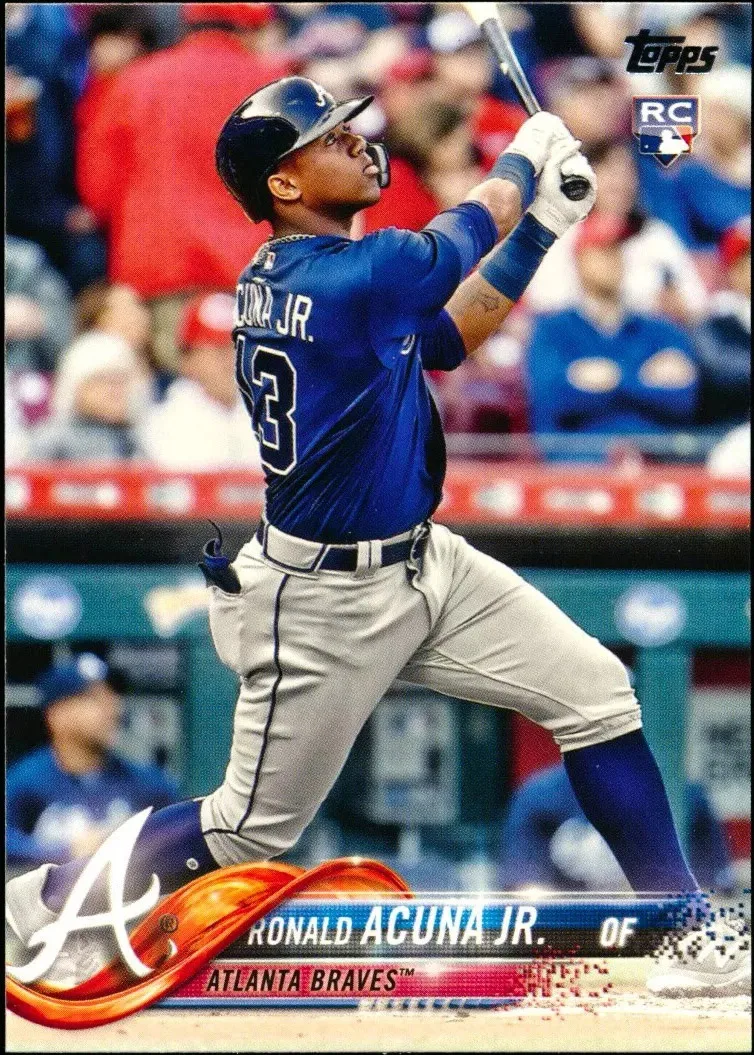
Event Has Grown, Evolved Since the Pandemic
Enjoy our fourth story in a series to help collectors prepare for the 44th annual National Sports Collectors Convention, which will be held in Cleveland from July 24 to 28. We will introduce a new topic each week leading up to the show.
This week, we dive into how The National has changed and evolved since the pandemic hit. Don’t miss next week’s story, where we discuss the on-site plans for third-party grading companies at The National.
The 2019 National Sports Collectors Convention in Rosemont, Illinois, was a great show.
There was a constant flow of collectors, vendors ready to wheel and deal, and corporate entities displaying their latest and greatest products. Just over seven months later, The Hobby was turned upside down. The COVID-19 pandemic hit, spurring a new level of growth in the space.
With the 2020 National canceled, new and old collectors were itching to attend the world’s largest cards and collectibles event. The ’21 show was back in Rosemont, a Chicago suburb, with the venue bursting at the seams. The two following shows also produced massive numbers, including the ’23 event, which broke the all-time attendance record.
The Hobby Goes Crazy
It’s incredible how things have changed in The Hobby in just the last five years.
“After COVID, shows just took off,” National Sports Collectors Convention Board of Directors President Al Durso told Topps RIPPED. “Shows that were just OK shows had long waiting lists, and promoters were selling out of shows. The National was no exception.”
During that two-year gap between National shows, the number of newcomers in The Hobby was off the charts.
“The thing that I think will always stick in my mind regarding the 2021 National was how much of the crowd were young collectors,” Robert Edward Auctions President Brian Dwyer said. “I remember there being this significant buzz around the 2021 National. After missing 2020, it was a big opportunity for people to get together and return to normalcy. But I remember a large, overwhelming contingent of young collectors. I’ve noticed that’s continued in ’21, ’22, ’23.”
Mascot CEO Ezra Levine said The Hobby’s growth has allowed The National to become more innovative in many areas.
“What’s changed is the complexion of the event,” Levine said. “You see a lot more technology. You see a lot more breakers. You see a lot more repackers. You see many more businesses trying to innovate and do creative things. This still is the Super Bowl of the industry. It’s a critical week for everyone to galvanize as a community. But, also, for companies to put their best foot forward to showcase to the hobby, the community, the industry, and all the things they’re working on.”
More Booths, More Attendees
Before this year, the I-X Center in Cleveland last hosted The National in 2018. Times were certainly different then.
The ’18 show used 600,000 square feet with 500 booths. This year’s event—which gets underway seven weeks from today—has a slightly smaller show floor area. However, there will be 623 booths, a 25% increase from six years ago.
“We could have sold another 100 to 200 booths if we had the space,” said Durso, who will be attending his 27th National. “The demand is there.”
Last year’s crowd of nearly 100,000 attendees broke the long-standing record of the 1991 show in Anaheim, California. Durso said ticket sales for this year’s 44th annual event are slightly ahead of last year’s figures at the same point in early June.
The National is bigger and more popular than it was pre-pandemic. But does that translate to being better?
“I think the collector experience is better now, and the new show managers are helping with that,” Durso said. “I think a lot of the corporate partners are helping that as well. Everyone’s trying to raise the bar because they want a better experience. They don’t want to go to a card show and only see 500 dealers; they want to be entertained.”
Newcomers Entering the Space
Having newcomers enter The Hobby is certainly a positive development. However, getting involved with the industry and The National as a collector, dealer, or vendor can be daunting.
“I think there are a lot of companies who are working on things to reduce friction and to make the industry more attractive and easier for people to get involved,” Levine said. “I’ve been on record as saying this the whole time: I still think the biggest challenge with 10x-ing, if you will, is it’s a complex industry. There’s a lot that you need to know to really dive deep into it. It’s not nearly as easy as fantasy sports or sports gambling. There’s complexity and nuances to this that I think are often a negating factor.”
Companies such as Mascot are trying to tackle those complexities head-on and make The Hobby an even better place to be.
Dwyer, who has attended every National since 2003, likes all the new people entering the industry. The growth bodes well for the future.
“I think it’s what every hobby yearns for,” Dwyer said. “Any time you can expand your base of consumers, that’s a good thing. We hear about how certain hobbies are falling by the wayside because people are not coming in. So, the fact that we can say that our hobby is growing, there’s a buzz about it, and everybody’s looking forward to these big conventions, I think that’s a tremendous positive for the business.”